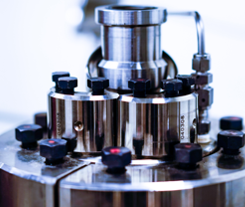Exisitng methods of identification of randomly generated genetic markers in cell populations, based on sequencing, are both labor-intensive and time-consuming, and require handling and processing of large volumes of data.
Unlike libraries of randomly generated markers, it is possible to tag, trace and identify single cells and/or entire organisms by carefully designing barcodes and introducing specific barcodes of known sequence into cells. This is particularly important for effective cell banking and efficient transfer of biological material between research institutions.
Developed method relies on MALDI-TOF and iPLEX mass spectrometry to detect genetic variants of barcodes, enabling genetic marking of cells, tissues and organisms, and their rapid identification, monitoring selected cell populations (or progeny of a single cell) through extended periods of time, investigating clonal evolution in the process of cancerogenesis and tracking individual cells during differentiation and organogenesis processes both in vitro and in vivo.
The invention described herein may be used for labeling, tracing and identification of cells or tissues during research, or transfer of biological material between laboratories.

